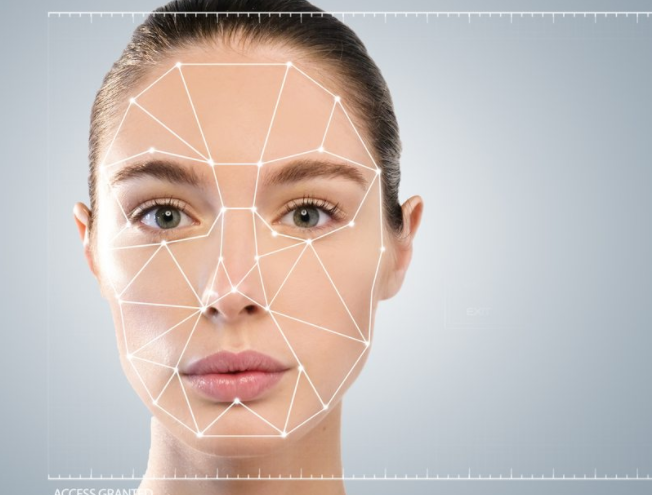We are constantly recognizing faces countless times a day, and most of us take it for granted.
我們每天都在不斷地辨認無數張臉,大多數人都認為理所當然。
Of course your best friend looks different from your mom, who looks different from Beyoncé.
當然,你最好的朋友看起來和你的媽媽不一樣,而你的媽媽看起來和碧昂斯不一樣。
But if you think about it, every face is pretty similar.
但如果你仔細想想,你會感覺每張臉都很相似。
Most of them have two eyes, a nose, and a mouth, and only vary just a little bit in shape, and color.
大多數人都有兩只眼睛,一個鼻子和一個嘴巴,只是在形狀和顏色上略有不同。
So, really, distinguishing faces in a crowd should be as difficult as distinguishing birds in a flock or bricks in a wall.
所以,實際上,在人群中辨別面孔就像在鳥群中辨別鳥類或在墻上辨別磚塊一樣困難。
Luckily, you know because otherwise we'd be terrible at all interactions, humans are exceptional at perceiving faces.
幸運的是,本來我們人類在所有的互動中都很糟糕,但在感知面孔方面非常特殊
Part of the reason for this is a specialized brain region called the fusiform face area, or FFA.
部分原因是因為一種特殊的大腦區域,我們稱之為紡錘狀臉部區域,或FFA。
The FFA is tiny and located in the brain's temporal cortex, which is generally responsible for object recognition.
FFA很小,位于大腦的顳葉皮層,通常負責識別物體。
Since faces are special, they get their own private real estate there.
由于面孔的特殊性,FFA擁有自己的私人物產。
We think that the FFA is face-specific because we can observe how the brain responds to faces compared to other objects.
我們認為FFA是專門針對面部的,因為我們可以觀察到大腦對其他物體和面部的反應。
In fMRI experiments, which measure brain activity during specific tasks,
功能磁共振成像是測量特定任務期間的大腦活動,
the FFA is active when looking at faces— whether they're real people, photographs, or even drawings.
觀察人臉時,無論是真人、照片,還是素描,FFA很活躍。
But other objects, like a cup of coffee or a building, activate other parts of the temporal cortex. Not the FFA.
但其它物體,比如一杯咖啡或一棟建筑,會激活顳葉皮層的其它部分,而沒有激活FFA。
However, scientists are still debating if the FFA is actually specific to faces, or if it's just really good at identifying complex objects we see a lot.
然而,科學家們仍在爭論FFA到底是專門針對人臉,還是僅僅擅長于識別我們經常看到的復雜物體。
Some researchers argue that if someone saw more birds than human faces, for example, their FFA might specialize for birds.
例如,一些研究人員認為,如果有人看到的鳥類比人的臉多,他們的FFA可能專門針對鳥類。
And they might be better at picking out a bird from a flock than a face from a crowd.
他們可能更善于從鳥群中辨認鳥,而不是從人群中辨認臉。
But we're still looking into these questions.
但我們仍在研究這些問題。
So how does this brain region help you process the world around you?
那么大腦區域是如何幫助你處理你周圍世界的呢?
Essentially, we see most objects as a collection of features.
從本質上講,我們將大多數對象視為特征的集合。
Like, we'll see something with a screen, buttons, and ports, then put all that information together to recognize it as a cell phone.
比如,我們會看到一些帶有屏幕、按鈕和端口的東西,然后把所有信息放在一起來識別,像手機一樣。
But we process faces more holistically.
但我們在觀察面部時會更全面。
We know how facial features are usually arranged in relation to one another, and can see them all at once as part of a face.
我們了解面部特征通常是如何相互聯系,并且把它們都看成是面部的一部分。

In fact, we might be a little too good at recognizing faces, which leads to a phenomenon called pareidolia.
事實上,我們可能太擅長人臉識別了,這就導致了一種空想性錯視的現象。
You might have seen pictures of faucets, or rocks, or even toast where you can't help but see a goofy little face in there,
你可能看到過水龍頭,石頭,甚至是烤面包的照片,你會不由自主看到一張傻傻的小臉,
even though you know that it isn't intentionally there.
即使你知道這些小臉不是故意出現的。
The layout of features is really important because the FFA only responds to faces in their normal arrangement and orientation.
特征的布局非常重要,因為FFA只對面部正常的排列和位置作出反應。
When one is upside down, you might know it's a face, but your brain doesn't treat it like one.
當一個人倒過來的時候,你可能知道那是一張臉,但你的大腦并不把它當成是臉。
Take the Thatcher Illusion, named after Margaret Thatcher, whose face was originally used to demonstrate this phenomenon.
以撒切爾錯覺為例(以瑪格麗特·撒切爾命名)最初撒切爾的臉被用來證明這種現象。
If you take a picture of someone's face and flip everything upside down except for the eyes and mouth,
如果你給某人的臉部拍照,把所有東西倒過來,除了眼睛和嘴巴,
it doesn't look that different from a normal upside-down face.
它看起來和普通的上下顛倒的臉沒什么區別。
That's because your brain's not viewing it as a face.
那是因為你的大腦沒有把它當成是臉。
It's just a collection of features, and every feature on its own looks pretty normal.
只是把它當作特征的集合,每個特征看起來都很正常。
But if you flip that image over, so the eyes and mouth are upside-down while the rest of the face is upright, it becomes terrifying.
但如果你把這張圖片翻轉過來,眼睛和嘴巴就會倒過來,而臉的其余部分是直立的,這就可怕了
Your brain recognizes it as a face, and realizes that something is very wrong overall.
你的大腦把它當成是臉,意識到總體上有些東西是錯的。
For some of you, though, face identification might actually not be any easier than telling birds apart.
然而,對你們中的一些人來說,面部識別可能并不比區分鳥類更容易。
Or you might not see random faces on inanimate objects.
或者你可能在無生命的物體上看不到隨機的面孔。
Estimates have found that about 1-2.5% of the world's population have a condition called prosopagnosia, or face blindness.
據估計,全世界約有1-2.5%的人患有人面失認癥,或稱臉盲癥。
To them, faces aren't special and are processed like any other object.
對他們來說,人臉并不特殊,處理起來和其它物體一樣。
This can be the result of a brain injury like a traumatic head injury or stroke that affects the FFA.
這可能是因為大腦損傷,比如創傷性頭痛或中風影響了FFA功能。
Others have congenital prosopagnosia.
其他人有先天性面孔失認癥。
As babies, they don't develop normal face recognition abilities.
嬰兒時期,人們還不具備正常的面部識別能力。
Based on current research, this condition is likely hereditary and also involves the FFA, but scientists are still looking into that.
根據目前的研究,這種情況可能是遺傳的,也涉及FFA,但科學家仍在研究。
Fortunately, most people with prosopagnosia can still recognize their friends and family.
幸運的是,大多數人面失認癥患者仍然能夠認出他們的朋友和家人。
They just have to work harder at it.
他們只需要更加努力。
For instance, they often actively memorize distinct features about friends, like that Bonnie has long pink hair.
例如,他們經常積極地記住朋友的不同特征,比如邦妮有一頭粉紅色的長發。
So if Bonnie gets a haircut, they'll have trouble recognizing her.
所以如果邦妮剪了頭發,他們就很難認出了。
Many of these people never even realize that they have prosopagnosia, or that they see faces differently from everyone else.
這些人中的許多人甚至沒有意識到他們患有人面失認癥,或者他們看到的面孔和其他人不一樣。
They might just assume they're “bad at faces” and write it off.
他們可能只是認為自己“不擅長認臉”,然后就沒有放在心上。
So human faces are an interesting paradox.
所以人臉是一個有趣的悖論。
They're all quite similar, but subtle differences make them super unique,
它們都很相似,但因細微的差別而獨一無二,
and our magnificent brains make them surprisingly easy to recognize.
我們非凡的大腦使這些認臉識別起來非常容易。
The most advanced computers still have difficulty recognizing faces, but our brains make this complicated thing seem very easy!
最先進的計算機仍難以識別人臉,但是我們的大腦讓這個復雜的事情看起來很簡單!
Thanks, brain.
謝謝我們的大腦。
And thank you for watching this episode of SciShow Psych, with a special thanks going out to our patrons on Patreon, who make these videos possible.
感謝收看本集心理科學秀節目,特別感謝Patreon對本節目視頻的支持。
If you want to help support our team and free psychology education online,
如果您想幫助支持我們的團隊和免費在線心理教育,
you can go to patreon.com/scishow.
可以登陸patreon.com/scishow。


